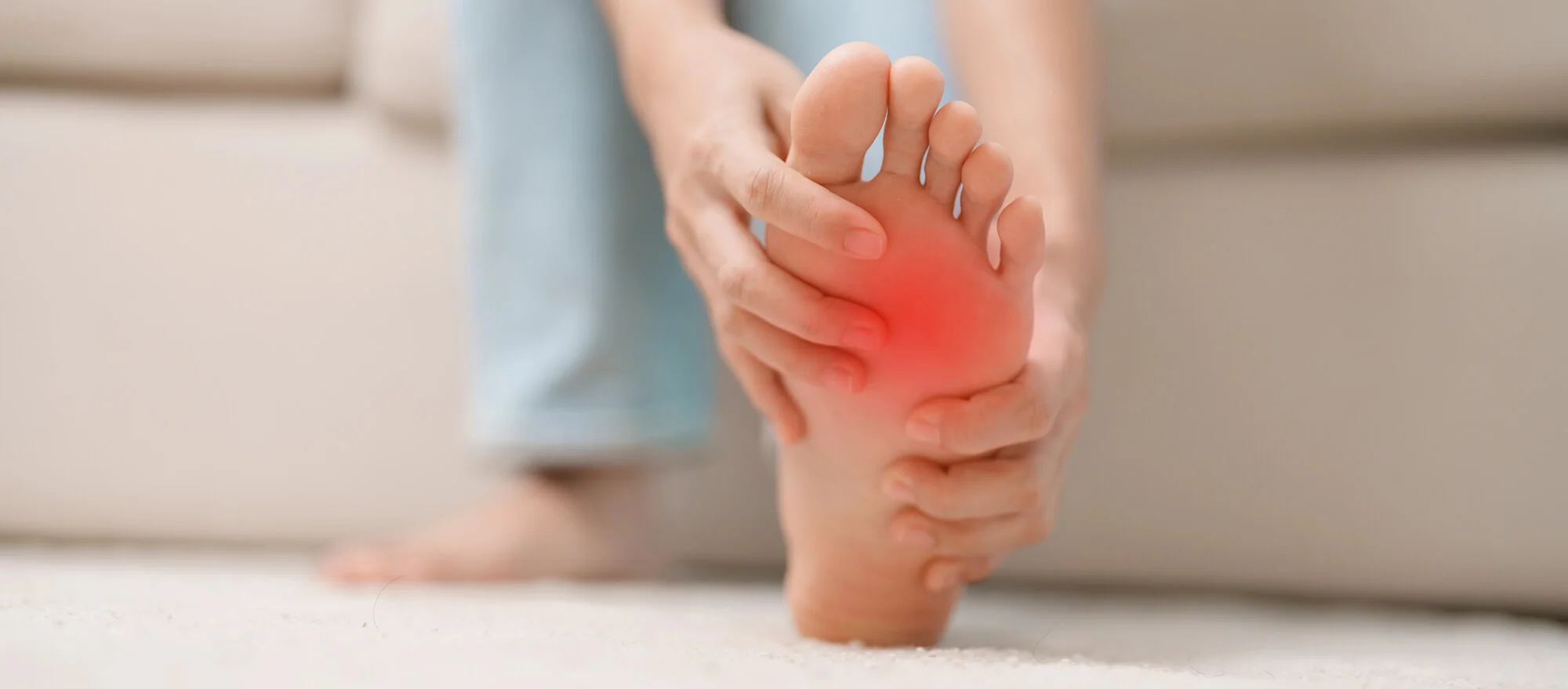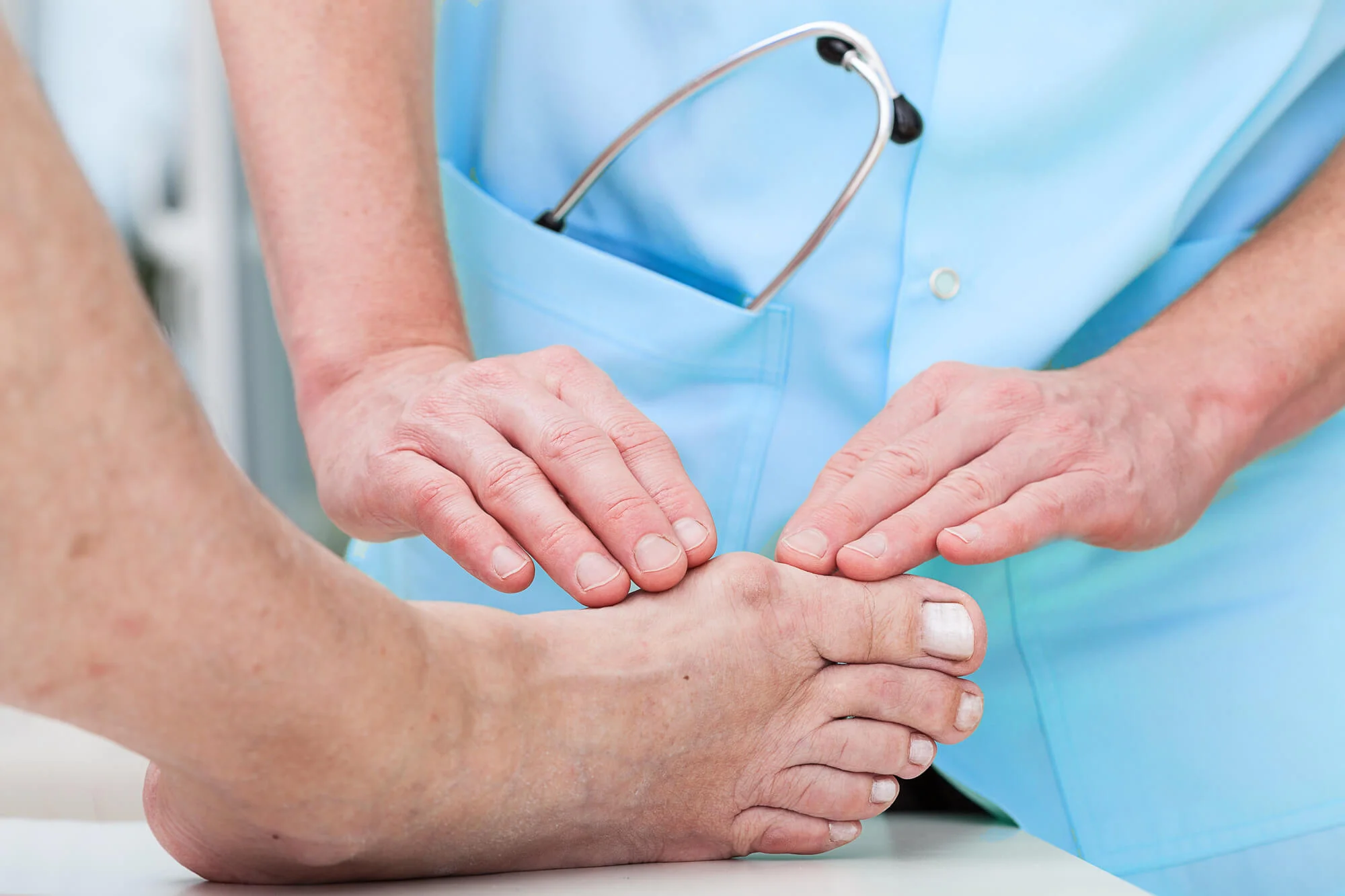Post
How Diabetic Shoes Could Save Your Feet—And Thousands in Medical Bills
July 2025

Living with diabetes requires constant vigilance—watching what you eat, staying active, and monitoring your glucose levels. But there’s one part of the body that often gets neglected until it’s too late: your feet. They carry you through each day, yet they’re especially vulnerable to injury and infection. Even minor foot issues can spiral into major medical concerns without the right care.
Diabetes affects circulation and nerve function, especially in the extremities. A small blister can turn into a serious medical event. What many people don’t realize is that a simple change—like wearing properly fitted diabetic shoes—can prevent these complications and reduce expensive hospital visits. This kind of proactive protection doesn't just preserve mobility—it helps you avoid steep medical expenses.

Why Diabetic Feet Are at Risk
Diabetes introduces several physiological challenges that make the feet particularly vulnerable to injury and infection. Below are the main reasons why diabetic feet face higher health risks:
1. Reduced Blood Circulation
This disease often causes blood vessels to narrow and harden, especially in the lower extremities. This impairs the flow of oxygen-rich blood, which your feet need to stay healthy and fight off infection. Without steady circulation, even a small scrape can take longer to heal, making the area a target for bacterial growth.
2. Damaged Nerve Endings (Neuropathy)
Peripheral neuropathy, a common diabetic complication, dulls your ability to sense pain, temperature, or pressure. As a result, you might not notice when shoes are rubbing too tightly or if you’ve stepped on something sharp. Injuries can develop silently and worsen without early intervention.
3. Increased Risk of Infection
Elevated blood sugar levels weaken the immune system, making it harder for your body to combat invading bacteria. This reduced defense leaves wounds more prone to infection, even when they seem minor. What begins as a small blister can escalate quickly into a deep, painful wound.
4. Delayed Wound Healing
Diabetes affects your body's natural repair mechanisms. Skin regeneration slows down, and collagen production—the material that helps rebuild tissue—is often impaired. This delay increases the window during which an open wound can become infected or spread deeper into the tissue.
5. Higher Risk of Ulcers and Amputation
All of the above factors—poor circulation, nerve damage, infection risk, and slow healing—combine to make diabetic feet more susceptible to ulcers. These open sores can extend into muscle or bone. In severe cases, where infection becomes widespread or tissue death sets in, amputation may become the only option to save a person’s life.
Protective shoes designed for diabetic feet reduce pressure and friction, creating a safer environment that actively supports daily foot health.
The Hidden Cost of Foot Complications
Foot complications from diabetes can become both medically serious and financially draining. While many think of foot injuries as minor inconveniences, for someone with diabetes, even a small wound can spiral into a costly—and life-altering—event. Here’s a breakdown of what those hidden costs can look like:
1. Ongoing Medical Expenses Add Up Quickly
Treating diabetic foot ulcers often requires frequent medical appointments with multiple specialists—podiatrists, endocrinologists, wound care nurses, and possibly infectious disease experts. Patients may also need durable medical supplies like specialized dressings, orthotics, offloading boots, and mobility aids. The expenses pile up fast, especially when treatment spans several months or longer.
2. Hospitalizations Drive Up the Bill
When ulcers worsen or become infected, inpatient hospital stays are common. Treatment may involve IV antibiotics, imaging, surgical debridement, and wound management. Each additional procedure adds another layer to the final bill, especially in emergency scenarios.
3. Amputation Costs Extend Far Beyond Surgery
Amputation costs often exceed $70,000 when factoring in surgery, hospital care, prosthetics, and rehabilitation. There are also the costs of home modifications (like ramps or walk-in showers) and long-term caregiving. This ripple effect can lead to overwhelming financial strain, especially for patients on fixed incomes.
4. Lost Wages and Employment Instability
Severe foot problems can lead to reduced mobility or disability, making it difficult to work or maintain a consistent income. Even those not yet retired may struggle with job performance due to limited standing or walking ability, leading to missed paychecks or early retirement.
5. Emotional and Quality-of-Life Costs
The psychological impact of chronic wounds, hospitalization, or amputation can be devastating. Feelings of isolation, reduced independence, and fear of recurrence affect emotional health and recovery. This emotional burden often slows healing, creating a cycle that’s both mentally and physically draining.
Supportive diabetic footwear helps sidestep these costs by making injury far less likely in the first place.

What Makes Diabetic Shoes Different
At first glance, diabetic shoes might look like any other comfortable footwear. But their design is anything but ordinary. Every feature is intentional, built to reduce injury and promote long-term foot health.
Key characteristics include:
- Extra Depth – Designed to accommodate orthotic inserts and promote pressure distribution.
- Wide Toe Box – Prevents crowding, which can cause friction and ulceration.
- Seamless Interiors – Helps protect delicate skin from chafing and irritation.
- Shock-Absorbing Soles – Softens impact and supports joint alignment.
- Breathable Materials – Promotes ventilation and reduces moisture buildup that can lead to fungal issues.
Today’s designs blend function with flexibility, offering styles that look and feel just as good as non-medical shoes. You can find athletic models with foam-padded collars, extra-deep dress shoes with Velcro fasteners, and casual options with stretchable uppers that adapt to foot swelling throughout the day.
Some even include antimicrobial linings or rocker-bottom soles for improved stability and gait correction. This variety allows patients to choose therapeutic footwear tailored to their lifestyle, without compromising appearance or comfort.
The Financial Advantage of Prevention
Preventing complications before they begin is the smartest financial move someone with diabetes can make, especially when it comes to foot health. Medically approved footwear may seem like a small change, but the long-term savings are substantial.
1. Minimal or No Upfront Costs
Medicare and many insurance providers cover one pair of diabetic shoes and three inserts each year. In most cases, patients pay nothing out of pocket. It’s a benefit that delivers real value without straining your budget.
2. Avoiding $10,000+ in Ulcer Treatment
Ulcer treatment expenses begin at five figures and increase with complications. Hospitalization, wound care, and specialist visits can turn one injury into a financial crisis. Choosing prevention now is far less expensive than dealing with damage later.
Consider this comparison: One individual, who wears Medicare-covered shoes daily, avoids injury entirely. Their out-of-pocket cost? $0. Another person, who opted for regular sneakers, developed an ulcer that necessitated surgery and four months of therapy. Their out-of-pocket expenses exceeded $6,000, even with insurance.
3. Eliminating the Expense of Ongoing Therapy and Wound Care
Recurring care like physical therapy, home nurse visits, or dressing changes racks up bills over time. Consistent use of foot-friendly footwear helps prevent wounds from forming in the first place, keeping you out of the treatment cycle entirely.
4. Reducing Recurring Out-of-Pocket Visits
Minor infections or calluses may seem manageable, but the cumulative cost of copays, prescriptions, and follow-ups can erode savings. Footwear that cushions and protects reduces the need for these avoidable appointments.
5. Long-Term Savings Through Yearly Prevention
A new pair of shoes each year may seem simple, but the cost avoidance adds up over five to ten years. It’s a quiet investment that protects both your future health and your finances. And because Medicare resets annually, it’s a renewable benefit—one you can and should use consistently.

How Medicare Makes Diabetic Shoes Affordable
If you qualify, Medicare helps cover the cost of therapeutic footwear each year. Here's how the process works:
- Eligibility: You must have diabetes and at least one qualifying foot condition, such as neuropathy, foot deformity, or a history of foot ulcers.
- Documentation: You'll need a prescription and written certification from the physician managing your diabetes.
- Coverage: Medicare typically includes one pair of shoes and three inserts annually.
- Supplier Requirements: Coverage only applies when you obtain your shoes from a licensed supplier approved by Medicare.
This benefit is designed to make preventive care easy and accessible, not burdensome or complicated.
Common Myths That Could Be Costing You
Misunderstandings about therapeutic footwear can prevent people from accessing this protective—and often free—resource. Here are a few myths that can do real damage:
1. “They look ugly or medical.”
Diabetic shoes now come in stylish designs. Many look indistinguishable from popular retail brands, from sporty sneakers to business casual options. Style and medical safety are no longer mutually exclusive.
2. “I don’t need them. My feet feel fine.”
Feeling fine doesn’t mean you’re not at risk. Many people with diabetes have reduced sensation due to neuropathy and don’t notice injuries until they’re serious. Proactive protection works best before symptoms begin.
3. “I can’t find time to get fitted.”
Today’s fitting services are more accessible than ever. You no longer need to spend hours in a waiting room. Fittings can often be scheduled in-home or during routine care appointments.
4. “It’s too complicated to get Medicare to pay.”
Medicare benefits can seem complex, but with the right support, the process is smooth. Providers and approved suppliers typically manage the paperwork on your behalf.
5. “They’re only for people with severe foot problems.”
You don’t need a wound or recent surgery to qualify. If you have diabetes and a basic risk factor like loss of sensation or a foot deformity, you may already be eligible.
6. “I already wear comfortable shoes—aren’t those enough?”
Comfortable retail shoes may feel good, but they lack medical-grade support, depth, and structure. Therapeutic footwear is built to meet clinical standards that prevent injury. Without these features, “comfy” shoes might actually contribute to long-term damage.
7. “They won’t fit my feet.”
Diabetic shoes are made in a wide range of widths and sizes, including extra-wide and high-volume options. Fitting specialists work to accommodate bunions, swelling, hammertoes, or other common issues. There's almost always a design that works, regardless of your foot shape.
A Step-by-Step Guide to Getting Diabetic Shoes
Ready to protect your feet and reduce your risk? Here’s what the process typically looks like:
Step 1: Speak with Your Healthcare Provider
Discuss your diabetes management plan and ask if diabetic shoes are right for you. Your provider will assess risk factors such as foot deformities, reduced sensation, or a history of ulcers.
Step 2: Confirm Medicare or Insurance Coverage
Your provider or an approved supplier can verify your eligibility and benefits. When documentation is submitted properly, Medicare typically covers the full cost.
Step 3: Schedule a Professional Fitting
A certified fitter measures both of your feet for length, width, and depth. They’ll also assess pressure points and arch support needs. Fittings are typically quick, noninvasive, and done at home or at a nearby clinic.
Step 4: Choose Your Footwear
Select from medically approved options in various styles and sizes. Your fitter will help you find a pair that balances comfort, function, and lifestyle—whether you’re looking for something athletic, formal, or casual.
Step 5: Wear Them Daily
Comfort kicks in right away—but the real value is in the protection that builds with regular use. Therapeutic shoes work best when worn consistently, not occasionally.
Step 6: Replace Them Yearly
If you qualify, you’re eligible for a new pair each year. Old shoes can lose their structure over time, so it's important to take advantage of your benefits annually.

Protect Your Health with Diabetic Shoes!
Diabetic shoes are one of the few medical tools that offer everyday comfort while quietly protecting you from expensive, painful complications. Investing in the right footwear can make a significant difference in your day-to-day well-being. Not only do these shoes provide support, but they also help prevent foot ulcers and other related issues. Taking the time to find the perfect fit is essential for managing diabetes effectively.
If you have diabetes, consider exploring diabetic shoes now. Contact No Cost Shoes, a Medicare-approved supplier, to see if you qualify for free therapeutic footwear. Our team handles all the paperwork and sends a certified shoe fitter to your home, so you can protect your feet without leaving the house.
Website by: Digital Resource





